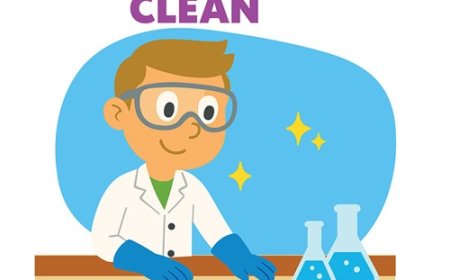Physical vs Chemical Changes for Students Explained
Learn the difference between physical and chemical changes with clear examples and how to tell if a change creates a new substance or keeps it the same
🌟 Introduction
Matter is constantly changing. Ice melts into water, wood burns into ash, and iron rusts into a reddish powder. These changes are grouped into two main types: physical changes and chemical changes. Understanding the difference helps scientists, engineers, and even cooks know whether a substance is the same or has become something new.
🔍 What Are Physical and Chemical Changes?
Physical Changes
A physical change changes how something looks or feels, but it is still the same substance. The molecules are arranged differently, but they are not changed into something new.
-
Examples: ice melting, paper being cut, water boiling, sugar dissolving in tea
-
Often reversible (can be changed back)
Chemical Changes
A chemical change makes a completely new substance with different properties. The atoms rearrange to form new molecules.
-
Examples: wood burning, iron rusting, cake baking, vinegar reacting with baking soda
-
Usually irreversible (cannot easily be changed back)
💡 Why Is This Important?
-
Helps identify changes in matter - Knowing whether a change is physical or chemical can prevent mistakes in science experiments.
-
Used in everyday life - Cooking, cleaning, and manufacturing all involve these changes.
-
Helps in safety and industry - Some chemical changes release heat, light, or dangerous gases.
-
Connects to environmental science - Understanding changes helps explain pollution, recycling, and energy use.
🧪 Signs of a Chemical Change
-
A new color appears
-
Heat, light, or gas is produced
-
A solid (precipitate) forms in a liquid
-
The change cannot easily be reversed
-
A different smell or taste is created
✨ Fun Facts
-
Cutting grass is a physical change, but the grass turning brown later is a chemical change.
-
The Statue of Liberty is green because of a chemical change in the copper surface called oxidation.
-
Glow sticks work because of a chemical change that releases light energy.
📌 Key Takeaways
-
Physical changes keep the same substance; chemical changes create new substances.
-
Physical changes often change shape, size, or state but can be reversed.
-
Chemical changes rearrange atoms into new molecules and are usually irreversible.
-
Signs of chemical change include color change, heat or gas production, and new smells.
🐾 Kid-Friendly Summary
Think of a physical change like changing clothes-you still have the same person inside. A chemical change is like baking a cake-you can't turn it back into flour, eggs, and sugar.
📚 Vocabulary Words
-
Physical Change - Change in appearance without making a new substance
-
Chemical Change - Change that forms a new substance with new properties
-
Chemical Reaction - Process where atoms rearrange to form new substances
-
Reversible - Can be changed back to the original state
-
Irreversible - Cannot be changed back easily
-
Precipitate - Solid that forms from a liquid in a chemical reaction
-
Oxidation - Chemical change where a substance reacts with oxygen
-
Reactants - Starting materials in a chemical change
-
Products - New substances made in a chemical change
-
Conservation of Mass - Matter is not lost or gained in a chemical reaction
🧠 Interactive Quiz
Choose the best answer for each question.
-
Which is an example of a physical change?
- A. Burning wood
- B. Melting ice
- C. Rusting iron
- D. Baking bread
-
What happens during a chemical change?
- A. Only the shape changes
- B. Atoms rearrange to make new substances
- C. Molecules stay exactly the same
- D. No new properties appear
-
Which of these is a sign of a chemical change?
- A. Ice melting
- B. Water freezing
- C. Gas production
- D. Cutting paper
-
Is boiling water a chemical change?
- A. Yes, it makes new molecules
- B. No, it’s still water
- C. Yes, it’s irreversible
- D. No, it’s always a solid
-
Which is usually true about chemical changes?
- A. They can be reversed easily
- B. They never produce gas
- C. They make a new substance
- D. They only change size
Answer Key
- B
- B
- C
- B
- C


















































